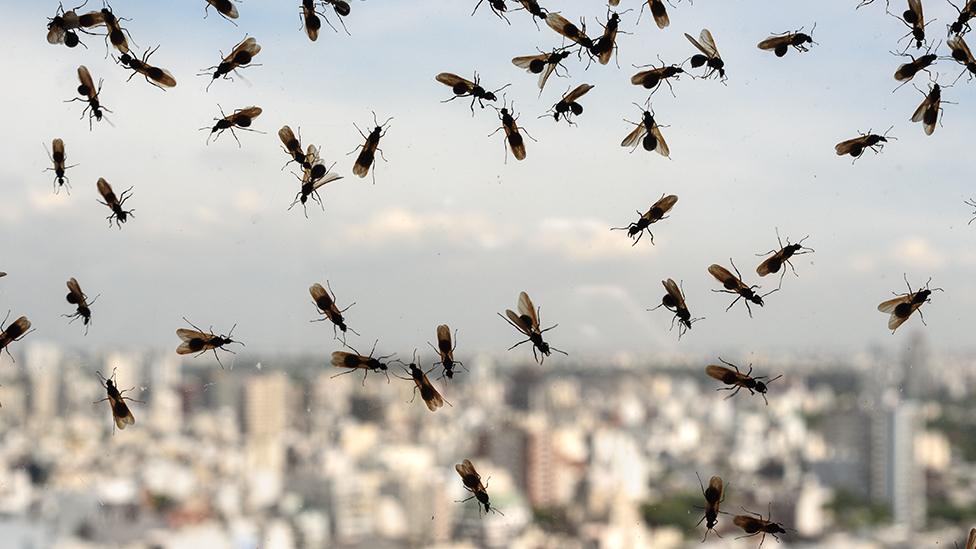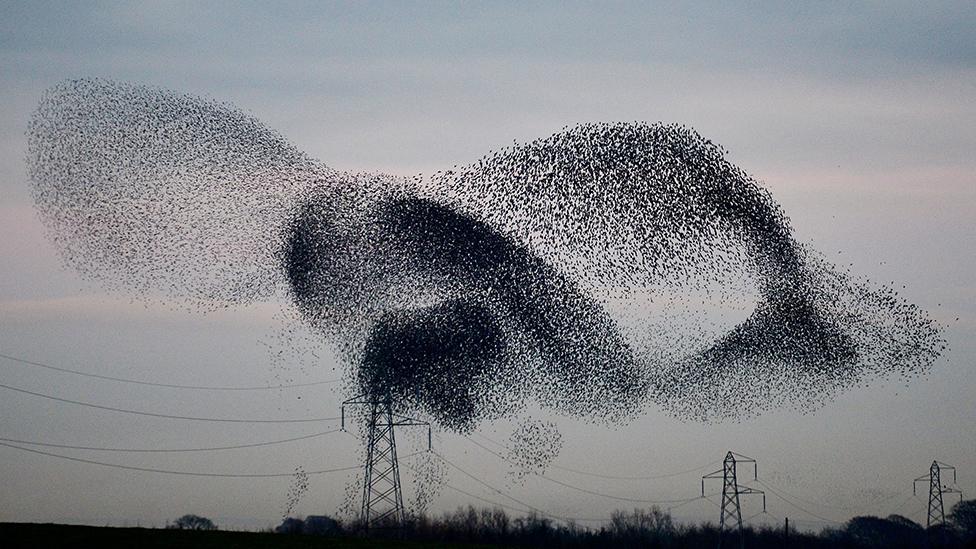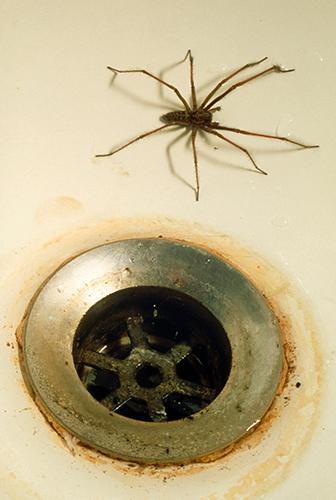'Twitter mining' for ants, spiders and birds
- Published

Scientists want to understand the influence of the environment on insect activity
Twitter is set to become a very useful resource in the study of certain animal behaviours, scientists say.
A new study trawled the public's postings on the micro-blogging site to see if they accurately reflected some popular ecological phenomena in the UK.
These events included the sightings of flying ants in summer, and the emergence of house spiders in autumn.
The research demonstrated that Twitter-mined information can replicate robust data gathered in other ways.
For example, the date and timing of Tweets for the ant and spider behaviours matched what had been recorded previously in large public surveys.
From the posted pictures of the spiders, the research team was even able to reproduce the sex ratio of the arachnids observed in those other studies.
"With caveats, it turns out to be very reliable (we tested it against published data in the same year and so on)," said Prof Adam Hart from the University of Gloucestershire.
"In the future, our tendency to share everything could be an absolute goldmine for scientists using this type of 'passive citizen science'," he told the BBC.
The prof can be heard talking about his Twitter mining on this week's Science In Action programme on the World Service.
WARNING: There is a spider picture lower down this page!

Who watches and posts pictures of starlings in the sky?
Twitter-mining is showing research promise in multiple areas - from tracing political sentiment during elections to mapping the extent and scale of shaking in earthquakes.
People will post their reactions to events, sometimes with pictures, and often using similar words and the same set of hashtags. Scientists can then search these messages looking for key patterns.
But care is needed in using this type of information source, notes the new study, published in the journal Methods in Ecology and Evolution, external.
Important location data will often be missing.
Twitter users have the option of geo-tagging all their posts, but many choose not to do this.
Sometimes it might be possible to discern a place from an attached picture, but it is certainly not safe just to assume the location is the one recorded in a user's bio profile.
Prof Hart said more needed to be known also about the motivations of Tweeters - why they would post on some events and not others.

That scary moment in the bath could become a data point in some future scientific study
Trying to replicate data for starling murmurations was less successful than for the flying ants and house spiders, and could provide no useful information to investigate the types of questions scientists had - such as whether the murmurations were influenced by the presence of birds of prey.
It could simply come down to the type of people who go to watch starling gatherings - they may not be avid social media users, Prof Hart speculated.
"But I think for phenology - so, the timing of events - this is going to be really, really useful because people are tweeting all the time," he added.
"I took a photograph this morning on the school run and in the background you can clearly see a particular species of tree and it's beginning to turn autumnal.
"Now, if I was to post that picture somewhere, I would have a location, a date, a species and I have the beginning of autumn. That immediately becomes a data point for scientists interested in the influence of climate change on the shift in the seasons.
"We'll start using these data in sophisticated way. It's early days yet, but there is a lot of potential."
Jonathan.Amos-INTERNET@bbc.co.uk, external and follow me on Twitter: @BBCAmos, external